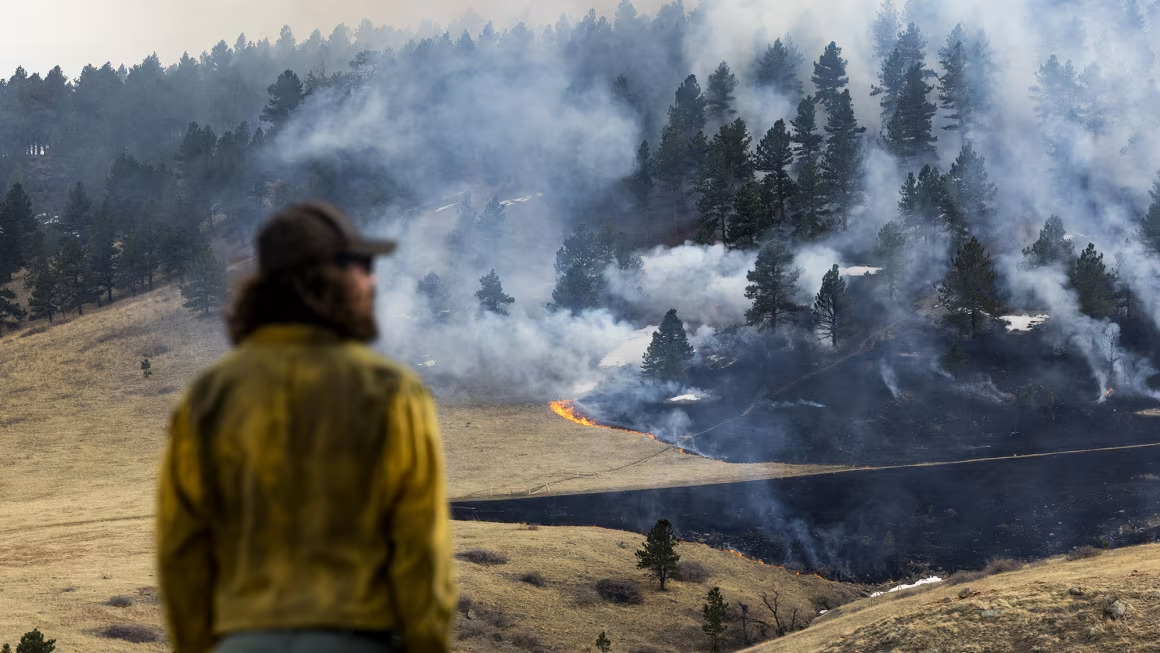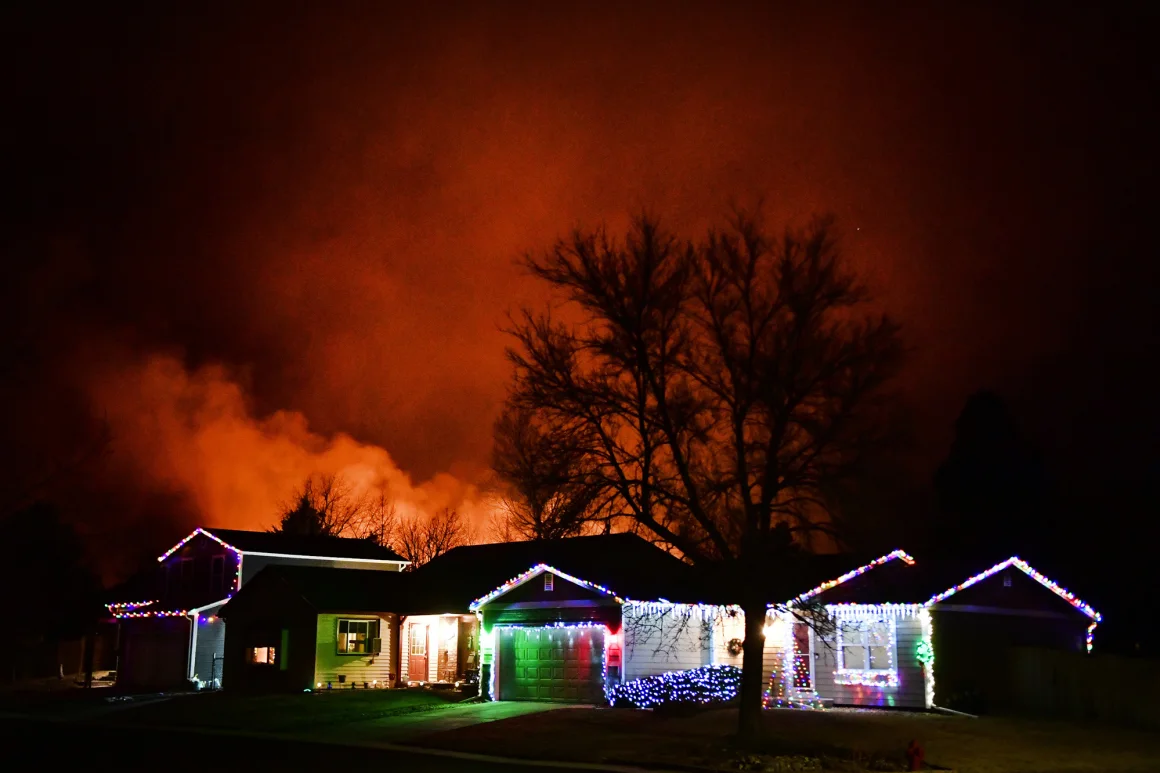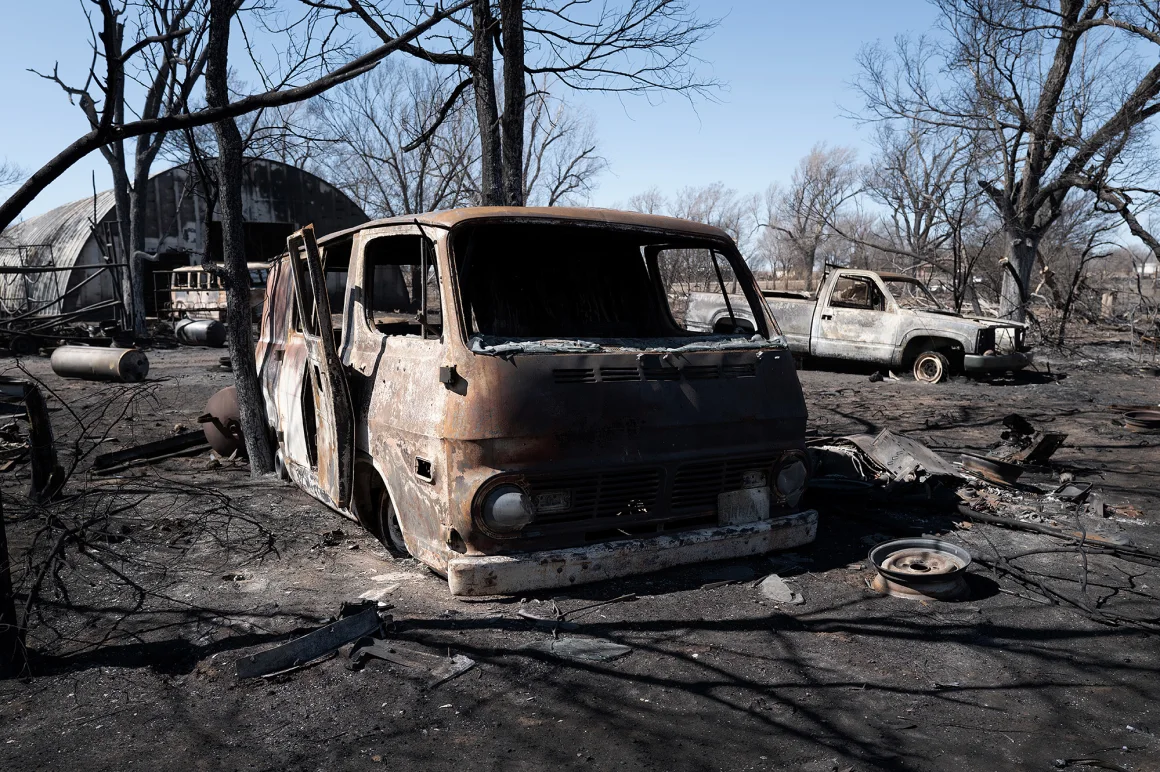The Growing Threat of Grassland Fires in the American West

TEXT : Louis Terrier
What was once an inconspicuous presence has now become a dangerous ignition source sweeping across the American West—grass. Ubiquitous and resilient, grasses have rapidly spread in recent years, contributing significantly to the rise of large-scale wildfires. As abundant as sunlight, grass can act like gasoline for wildfires under the right weather conditions. All it takes is a spark to set off a devastating blaze. The rising temperatures and shifting precipitation patterns driven by global warming have intensified both the frequency and scale of wildfires, disrupting ecosystems and accelerating the spread of invasive grasses. These changes create a vicious cycle, further fueling the dominance of fire-prone vegetation. “In every environment, there is always a type of grass that can survive,” says Adam Mahood, an ecological researcher with the U.S. Department of Agriculture. “If there’s even a few feet of unpaved land, grass will grow.”
Fire experts say that grassland fires typically burn faster than forest fires, often outpacing firefighting efforts, even if their duration is shorter. The greatest concern lies in their ability to leap into residential areas that border dry wilderness.
Recent studies show that the number of homes destroyed by wildfires in the U.S. has more than doubled over the past 30 years. Most of these homes were not consumed by forest fires, but by blazes that swept through grass and brush.
The western U.S. has borne the brunt of this destruction, with over two-thirds of all wildfire-related home losses occurring there—and about 80% of those were due to grass and shrub fires.
One major factor is the increasing trend of people building homes in wildland-urban interface zones—transitional areas where residential development meets flammable natural terrain. Since the 1990s, both housing and fire activity in these zones have surged. As of 2020, approximately 44 million homes in the U.S. were located in such regions, a 46% increase over the past three decades.

Living in fire-prone areas not only increases exposure to fire risk—it also raises the likelihood of fires starting in the first place, as most wildfires are caused by human activity.
Bill King, a U.S. Forest Service official managing over 80,000 homes at the wildland-urban interface in Kansas and Colorado, stresses the importance of proactive fire prevention for those living near nature.
“Fires can jump for miles, especially when driven by strong winds,” King warns. “Even major fuel breaks may not be enough to stop them.”

The risk of wildfires driven by climate change now blankets much of the western United States.
“Globally, the areas most prone to fire are those with moderate rainfall,” says John Abatzoglou, a climate scientist at the University of California, Merced. “It’s a kind of Goldilocks zone—not too wet, not too dry, just enough to promote ignition.”
The central U.S. grasslands—characterized by dry conditions, frequent winds, and perennial vegetation—offer ideal fuel for wildfires. A wet spring encourages rapid grass growth, while warmer, low-snow winters leave dried grasses exposed by early spring.
According to King and Todd Lindley, a fire weather expert with the National Weather Service in Norman, Oklahoma, grass is extremely sensitive to weather. Unlike forests, it doesn't need a prolonged dry season to become flammable; moisture can evaporate in as little as an hour or a day after rain.
Add to that a spark, strong winds, and invasive shrubs that burn hotter and longer, and the result can be a fast-moving inferno.
“When these extreme conditions align in the right sequence, it creates a ‘perfect storm’ for wildfires,” Abatzoglou explains. “And that fire can reach right into our neighborhoods.”
